Jesse Scott
FootFormer: Estimating Stability from Visual Input
Oct 22, 2025Abstract:We propose FootFormer, a cross-modality approach for jointly predicting human motion dynamics directly from visual input. On multiple datasets, FootFormer achieves statistically significantly better or equivalent estimates of foot pressure distributions, foot contact maps, and center of mass (CoM), as compared with existing methods that generate one or two of those measures. Furthermore, FootFormer achieves SOTA performance in estimating stability-predictive components (CoP, CoM, BoS) used in classic kinesiology metrics. Code and data are available at https://github.com/keatonkraiger/Vision-to-Stability.git.
Image-based Stability Quantification
Jun 23, 2022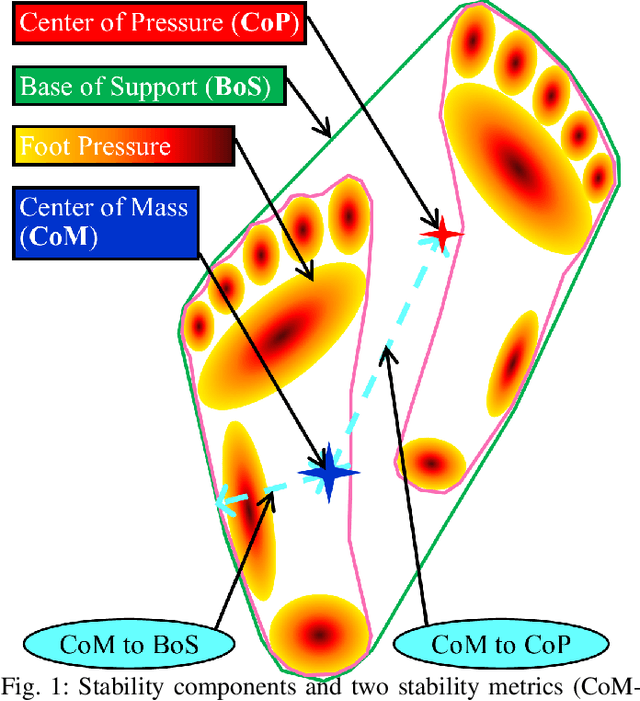
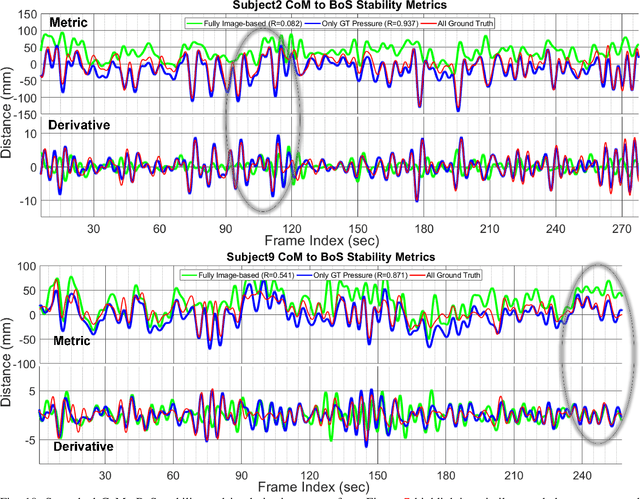
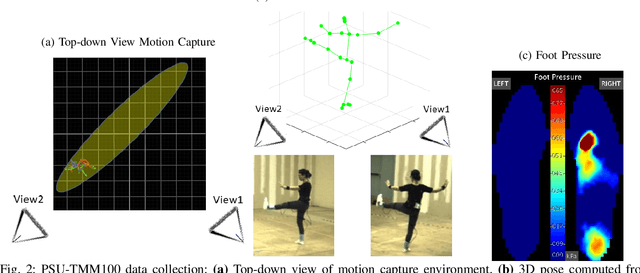
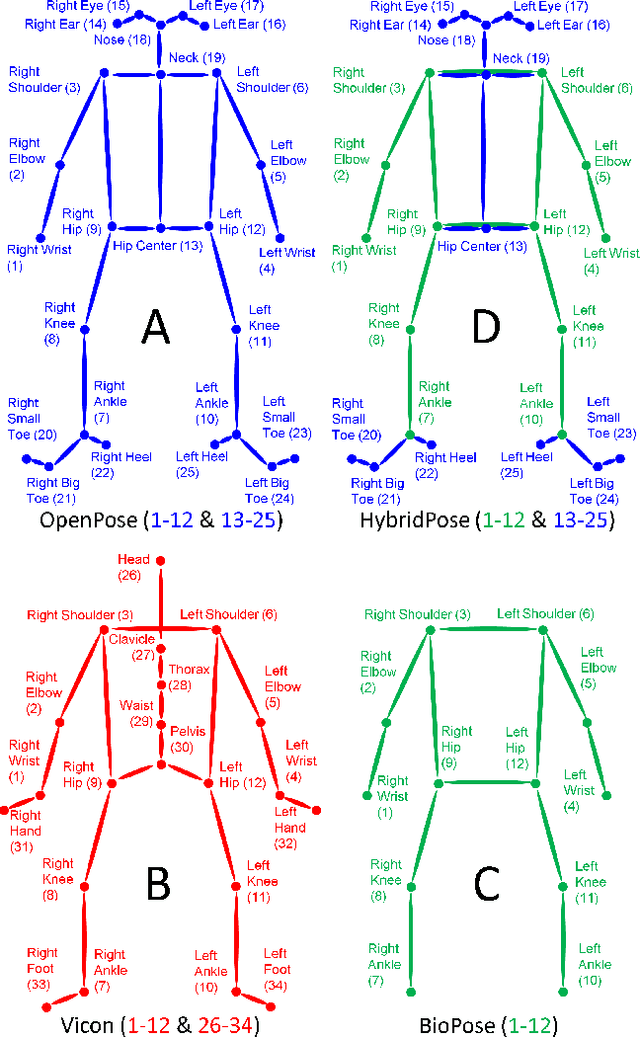
Abstract:Quantitative evaluation of human stability using foot pressure/force measurement hardware and motion capture (mocap) technology is expensive, time consuming, and restricted to the laboratory (lab-based). We propose a novel image-based method to estimate three key components for stability computation: Center of Mass (CoM), Base of Support (BoS), and Center of Pressure (CoP). Furthermore, we quantitatively validate our image-based methods for computing two classic stability measures against the ones generated directly from lab-based sensory output (ground truth) using a publicly available multi-modality (mocap, foot pressure, 2-view videos), ten-subject human motion dataset. Using leave-one-subject-out cross validation, our experimental results show: 1) our CoM estimation method (CoMNet) consistently outperforms state-of-the-art inertial sensor-based CoM estimation techniques; 2) our image-based method combined with insole foot-pressure alone produces consistent and statistically significant correlation with ground truth stability measures (CoMtoCoP R=0.79 P<0.001, CoMtoBoS R=0.75 P<0.001); 3) our fully image-based stability metric estimation produces consistent, positive, and statistically significant correlation on the two stability metrics (CoMtoCoP R=0.31 P<0.001, CoMtoBoS R=0.22 P<0.001). Our study provides promising quantitative evidence for stability computations and monitoring in natural environments.
From Kinematics To Dynamics: Estimating Center of Pressure and Base of Support from Video Frames of Human Motion
Jan 02, 2020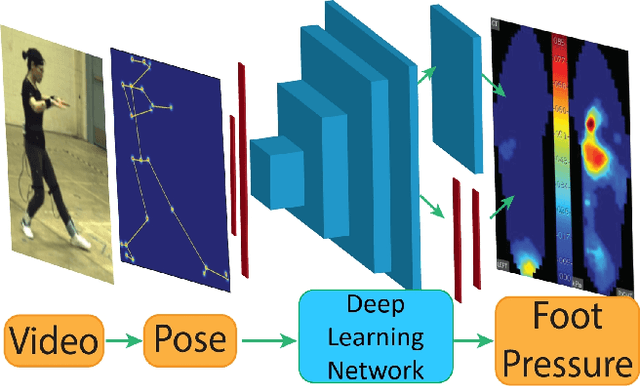

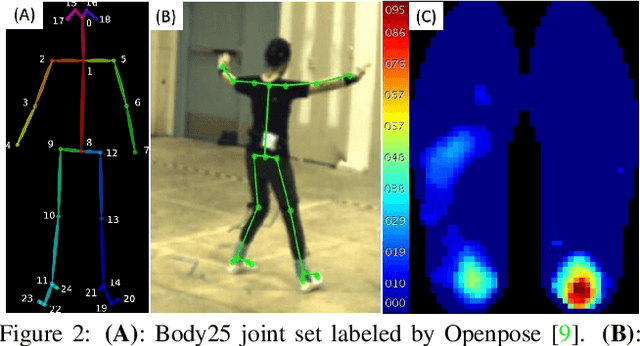
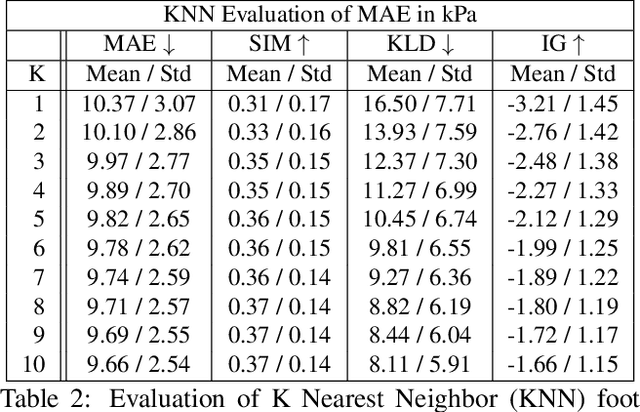
Abstract:To gain an understanding of the relation between a given human pose image and the corresponding physical foot pressure of the human subject, we propose and validate two end-to-end deep learning architectures, PressNet and PressNet-Simple, to regress foot pressure heatmaps (dynamics) from 2D human pose (kinematics) derived from a video frame. A unique video and foot pressure data set of 813,050 synchronized pairs, composed of 5-minute long choreographed Taiji movement sequences of 6 subjects, is collected and used for leaving-one-subject-out cross validation. Our initial experimental results demonstrate reliable and repeatable foot pressure prediction from a single image, setting the first baseline for such a complex cross modality mapping problem in computer vision. Furthermore, we compute and quantitatively validate the Center of Pressure (CoP) and Base of Support (BoS) from predicted foot pressure distribution, obtaining key components in pose stability analysis from images with potential applications in kinesiology, medicine, sports and robotics.
 Add to Chrome
Add to Chrome Add to Firefox
Add to Firefox Add to Edge
Add to Edge